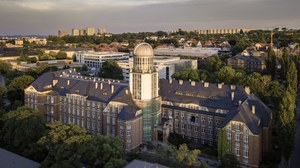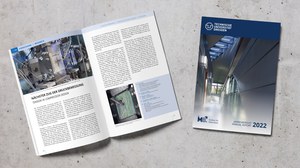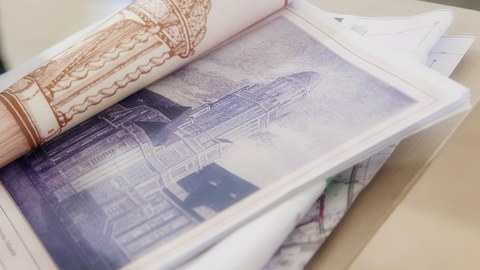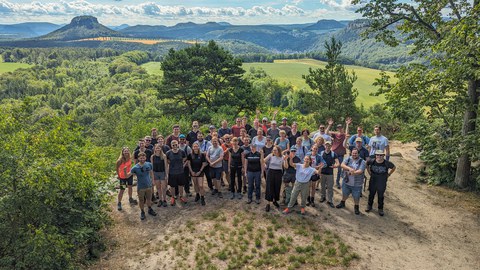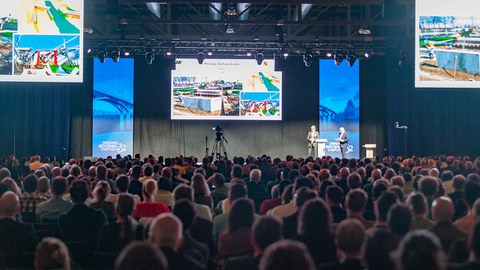The institute introduces itself
For more than 100 years the subject 'solid structures' has been taught at the TU Dresden. At the moment four professorships belong to our institute. All studies and research within the institute are focused on experimentation on reinforced concrete in all its various forms. In the field of teaching, we collaborate with many partners of the construction industry. Together we make research findings become part in construction projects.
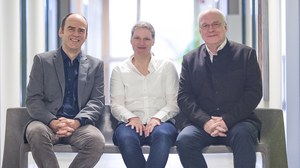 © Stefan Gröschel
© Stefan Gröschel
From Roman heritage to sustainable innovation: how we are reinventing building with concrete
[Foreword from the Institute's 2023 Annual Report]
Are you familiar with terms such as concrete head, concrete jungle, or concrete block?
Concrete does not have the best reputation in Germany. This was not always the case and is not necessarily the case in other countries either.
A look back: Greek settlers brought the knowledge of hydraulic lime to the Romans, who eventually developed the opus caementitium we know today. There was not just a single recipe for this building material, as the rules in Vitruvius De Architectura Libri Decem initially led us to believe, but the Roman concrete was mixed with the raw materials available in the individual regions of the Roman Empire. This meant that the Romans had already implemented an important element of sustainability.
In contrast to concrete, opus caementitium has a very good reputation, as it is associated with particular durability and sustainability. It is easy to overlook the fact that although there are some buildings made of Roman concrete that still exist today, we do not know how many buildings are no longer standing. In addition, many of the properties of opus caementitium that were considered positive are no longer so positive when related to capabilities such as strength.
The fact that the term "concrete" does not have a good reputation is mainly due to what has been built from concrete in Germany. In France, for example, many buildings made of concrete have a high innovative and aesthetic value, so the reputation is much better. In recent years, however, the fact that the production of concrete accounts for a large proportion of the CO2 emissions that are changing our climate has been added to this.
By changing concrete construction to a climate-neutral construction method - which is already being addressed as a possible goal in research - we can eliminate the second argument for today's poor reputation. The Institute of Concrete Structures at TU Dresden is taking on the necessary responsibility in research and teaching for a paradigm shift in building with concrete: in many areas such as carbon concrete, new design strategies, digitalization, monitoring, recycling and others, we are creating the foundations for climate-neutral and resource-efficient construction, for the new building with concrete. It seems realistic that the new concrete could even become a CO2 sink.
The question remains as to how we can use new aesthetics to ensure that structures built from concrete gain a new radiance, because they also show the outside world that the concrete of the future combines innovation and safety. The aim here is to consistently develop and implement new design strategies for the new concrete. The concrete of the past was the problem, the new concrete is the solution.
We can only make this vision a reality together with all stakeholders in the construction industry. Clients, construction companies, construction supervisors, consultants, test engineers and scientists must all pull together - and in the same direction - in order to be successful. We offer to make our contribution to this. In this annual report, we present our research and teaching projects to give you the opportunity to identify similarities between your topics and our projects, our expertise, so that you may contact us.
We are extremely grateful to our employees for their willingness to contribute their ideas, their reflections and their commitment to our work, and we thank you, our partners, donors and sponsors, for your support.
Please stay with us!
Manfred Curbach, Steffen Marx
and Birgit Beckman

